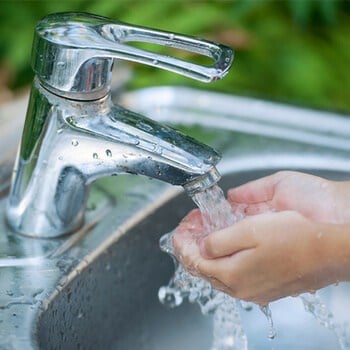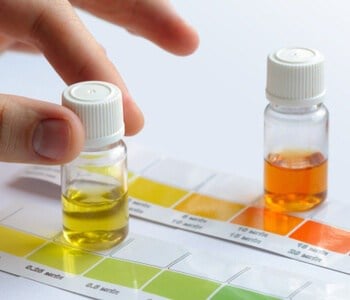
Not all tap water is as clean as it looks. While it might be safe by basic standards, it can still contain things you’d rather not drink—like chlorine, heavy metals, or sediment.
If you’ve noticed strange tastes, cloudy water, or stained laundry, it might be time to install a filtration system.
Below are seven signs that your home could benefit from cleaner, filtered water.
💡 Key Takeaways
- Bad taste or chemical smell in your water
- Cloudy appearance or visible sediment
- Stains on sinks, tubs, and laundry
- Low water pressure
- White residue on dishes or glassware
- Frequent limescale buildup
- Home built before 1986 (possible lead pipes)
What’s in our water?
Before we dive into the signs, it helps to know what could be in your tap water. According to the Environmental Working Group (EWG), drinking water may contain trace amounts of contaminants like pesticides, heavy metals, and chemical byproducts.
Most of these are present in low concentrations, but long-term exposure—especially to vulnerable groups—can still pose health risks. The EWG has identified dozens of substances in U.S. water supplies that are linked to cancer or other health concerns.
First things first, start with a water test and consider a filtration system that targets the specific contaminants in your area.
What are The Tell-Tale Signs You Need a Water Filtration System?

1. Bad Taste or Odor If your water tastes metallic or smells like chlorine, sulfur, or chemicals, it could be carrying contaminants from treatment plants, plumbing, or even nearby landfills.
2. Skin Irritation or Rashes Unexplained skin problems may be caused by trace chemicals or heavy metals in your water. If your skin feels worse after showers, it’s worth investigating.
3. Dingy or Discolored Laundry If your whites are turning yellow or gray, it could be from hard water or iron. These minerals can also build up in towels, making them rough on skin and hair.
4. Cloudy or Murky Water Discoloration or sediment in tap water often points to mineral overload, rust, or buildup in old plumbing. Clear water should look… clear.
5. Strange Smells from the Tap Chemical or musty odors are a red flag. Contaminants like chlorine, sulfur gas, or even organic material could be the cause.
6. Feeling Unwell After Drinking Water If you feel nauseous or sick after drinking tap water, stop immediately. This could be a sign of bacteria, VOCs, or other serious contamination. Get your water tested.
7. Your Home Was Built Before 1986 Older homes may still have lead pipes, which can leach toxic metal into your drinking water—especially if you’re on city water. Filtering is essential.
If any of these sound familiar, it might be time to test your water and consider a filtration system.
Why You Should Get a Water Test

If you’re not sure whether your water needs filtering, the best first step is to get it tested. A water test can tell you exactly what’s in your tap—whether it’s chlorine, heavy metals, bacteria, or something else—and help you choose the right filtration system for your needs.
You can request a Consumer Confidence Report from your local water supplier or test it yourself using a home kit. We recommend SimpleLab’s Tap Score for city or well water—it’s easy to use and gives you personalized recommendations.
If you’re on well water, testing is even more important. Some contaminants, like sulfur or iron, affect smell and color but aren’t necessarily dangerous—while others, like bacteria or lead, may go unnoticed without testing.
What Is a Whole House Water Filter System?
A whole house water filter connects to your home’s main water line. It filters all the water entering your house—so every tap, shower, and appliance benefits.
Unlike faucet or under-sink filters, whole-house systems catch contaminants like sediment, chlorine, and heavy metals before they reach your plumbing. This improves water taste, protects your appliances, and can even extend the life of your pipes.
Learn more about how whole house water filters work.
What Types of Whole House Systems Are there?
There are three different types of water filtration systems for whole-house use:
- Carbon Block Filters – These filters use activated carbon to remove chlorine and other contaminants from the water supply. Carbon block filters can be effective at removing lead and chemicals like benzene, but they aren’t as thorough as some other options on the market.
- Ion Exchange Filters – Ion exchange filters use a resin bed to remove hardness, chlorine, and other impurities from the water. This type of filter is effective at removing dissolved minerals like lead and copper, and it can also improve the taste and smell of your water.
- Reverse Osmosis Systems – Reverse osmosis systems are the most effective type of whole house filter and they can remove virtually all impurities from your water. This system uses a semipermeable membrane to remove chemicals, bacteria, and dissolved minerals from the water supply. It is also effective at reducing the levels of arsenic and fluoride in your water
How Much Does a Home Filtration System Cost?
There is a variety of different types of water filtration systems on the market, and each one will have a slightly different price tag. In general, you can expect to pay anywhere from $600 to $1,500 or more for a complete system. The cost of installation could range from $800 to $1700 or more, depending on the type of filter you choose and the size of your home.
Further reading: How much do water filtration systems cost
Final Thoughts
Now that you know some of the signs that you need to start filtering your water, it’s time to get started! Not only will this help improve your overall health, but it will also help to protect your appliances and plumbing from build-up.
When it comes time to choose a whole house water filter system, be sure to do your research and find one that is right for your needs. Remember, not all filters are created equal – so be sure to select one that will remove the contaminants that are of most concern to you.
 121 people found this helpful. Was this guide helpful to you?
121 people found this helpful. Was this guide helpful to you? 


